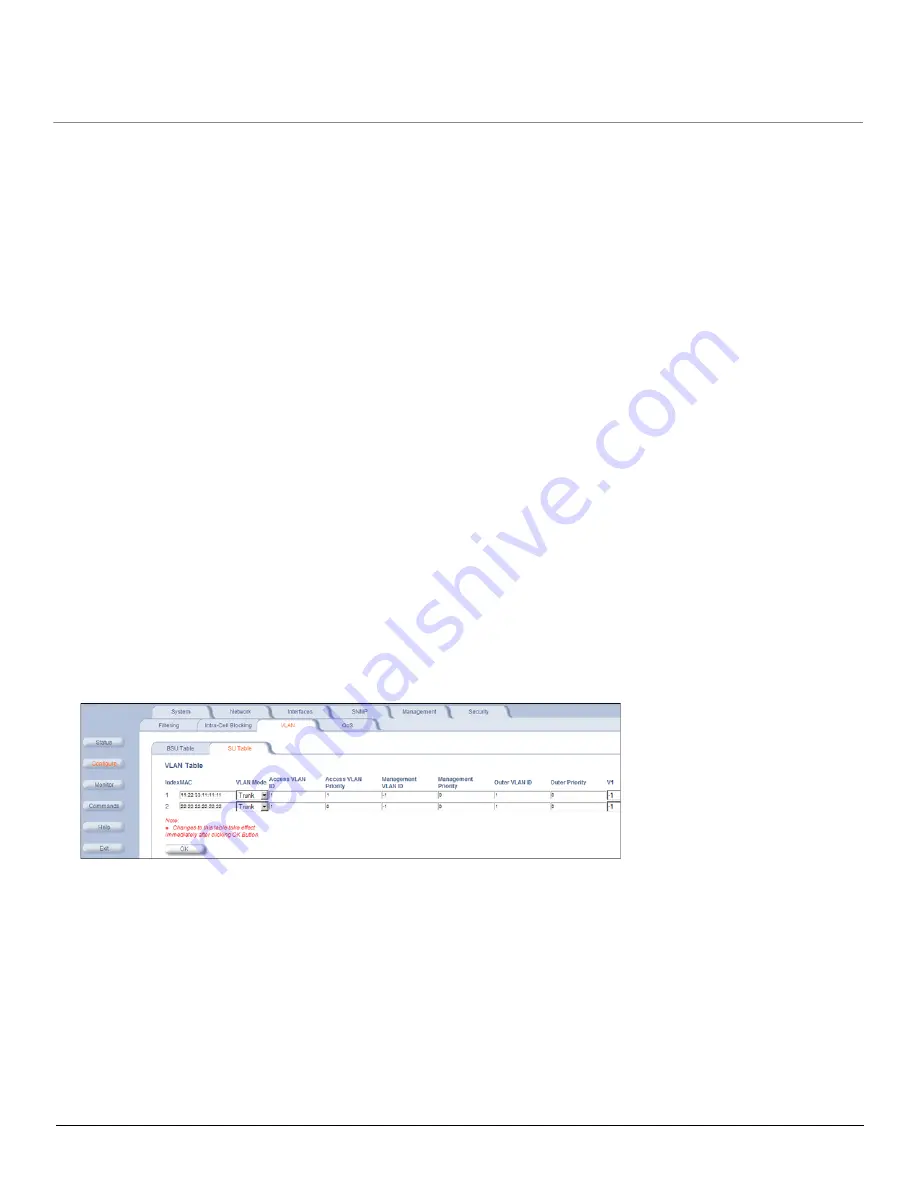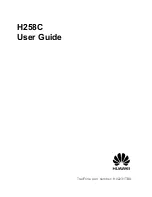
Configuration
QB.11-R Installation and Management
VLAN Parameters (BSU Only; Bridge Mode Only)
105
NOTE:
When the BSU is changed to Mixed mode, all the configured SUs are changed to Mixed mode by default. You
may then configure SUs for Access or Trunk mode as needed.
•
Access VLAN ID:
The Access VLAN ID is configurable in any mode, but applies only when the SU is in Access
mode. The Access VLAN ID values range from 1 to 4095; the default value is 1.
•
Access VLAN Priority:
The Access VLAN Priority is configurable in any mode, but applies only when the SU is in
Access mode. The Access VLAN priority values range from 0 to 7; the default priority is 0. For voice frames, the
priority field is set to the VoIP configured value (5 according to latest IETF draft, or 6 according to IEEE 802.1D)
regardless of the priority value configured.
•
Management VLAN ID:
The management VLAN ID is configurable in any mode. The management VLAN ID has a
default value of
untagged
(-1) and may be configured with a value in the range of 1 to 4095.
•
Management Priority:
The Management VLAN priority values range from 0 to 7 and the default priority is 0 (zero).
•
Outer VLAN ID:
The Outer VLAN ID is configurable only in Trunk mode. If this parameter is set to -1, the QinQ
mechanism is disabled by default. If this parameter is set to any number between 1 and 4095, all tagged data is
appended with an additional VLAN ID as the outer VLAN ID.
•
Outer Priority:
The Outer VLAN Priority is configurable only in Trunk mode, and applies only when the SU is in Trunk
mode and the Outer VLAN ID is configured to a value between 1 and 4095. The Outer VLAN Priority values range
from 0 to 7; the default priority is 0. For voice frames, the priority field is set to the VoIP configured value, regardless of
the priority value configured.
•
VLAN 1-16:
The VLAN IDs are configurable in any mode, but apply only when the SU is in Trunk mode. The VLAN ID
values range from 1 to 4095; the default value is untagged (-1). The maximum number of VLAN IDs that can be
configured in the SU VLAN Table is 16 for each SU. The SU VLAN IDs must be in the BSU VLAN Table that
corresponds to the BSU.
Edit SU Table Entries
To edit SU table entries, click the
Edit/Delete Table Entries
button; make your changes on the window displayed, then
click
OK
to save your changes.
NOTE:
If an SU is associated to a BSU, it cannot be deleted from the VLAN table.
Typical User VLAN Configurations
VLANs segment network traffic into groups, which lets you limit broadcast and multicast traffic. These groups enable
hosts from different VLANs to access different resources using the same network infrastructure. Hosts using the same
physical network are limited to those resources available to their workgroup.
The unit can segment users into a maximum of 16 different VLANs per unit, based upon a VLAN ID.
The primary scenarios for using VLAN workgroups are as follows:
•
VLAN disabled:
Your network does not use VLANs.
•
VLAN enabled:
Each VLAN workgroup uses a different VLAN ID Tag. A mixture of Tagged and Untagged workgroups
may be supported.
















































